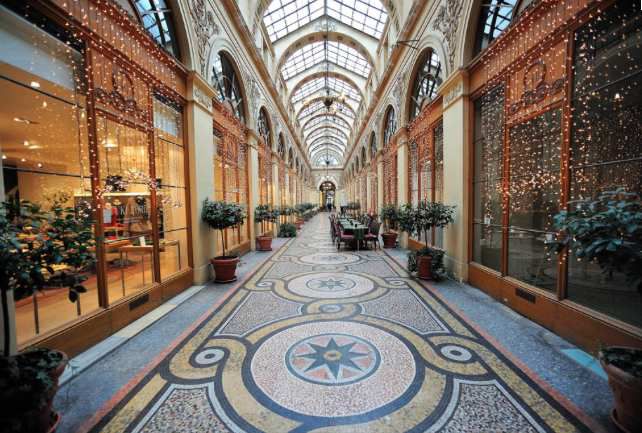Nineteenth century Paris
/image%2F1030222%2F20160306%2Fob_751605_jab15-caillebotte-001f.jpg)
The city experienced in the nineteenth century profound changes that characterize its aspect to the visitor today: Haussmann boulevards, public and private buildings, parks, stations. Simultaneously, the period was also a key moment in the history of painting as evidenced in the works of arts exhibited in the Musée d'Orsay, ironically a former train station of that age.
I can only scratch the surface of such a vast subject in this blog and I hope to make you want to go further by proposing to follow my visits where the history of this nineteenth century is an important aspect.
Historians begin the nineteenth century with the 1797 Directoire marking the end of the revolutionary period and end it with the First World War, far exceeding the limits of the 1800s; this period is not so far back since most of our grandparents had witnessed its last years named nostalgically, the "Belle Epoque". This was a proud historic period: many books published then such as "Confession of a Child of the Century" by Alfred de Musset referred to it, which shows that the people at that time were conscious of living a momentous time in history.
Four periods can be distinguished: the Napoleonic era, the Restoration, the Second Empire and the 3rd Republic, during which great confidence was displayed in the progress of science and economic development for the good of humanity in parallel with a fear of the owning classes wanting to protect themselves from the greed of the poorer classes.
The Napoleonic regime, from the Directoire to the Empire, that brings the inner peace desired by the majority of French people after the excesses of the revolutionnary "terrorists" is an authoritarian regime, a sort of monarchy without a king who implements the principles of the Revolution through stable institutions based on modern rational and legal principles. In the field of art, the Empire style requires a complete break with previous styles to illustrate the moral principles from the revolutionary ideals; its decorations inspired by Greco Roman antiques rediscovered by excavations of Pompeii and the young aristocrats study trips (Grand Tour), as well as descriptions of Egypt recorded in a monumental album that were made by scholars and artists who accompanied Bonaparte’s expedition. From these sources, architects Percier and Fontaine, "designers" before their time offered in their works the models to inspire architects, cabinetmakers, silversmiths and engravers.
Restoration which followed the defeat of Waterloo in 1815 starts with a challenge to the achievements of the Revolution and the Napoleonic era well described by Balzac in his "Colonel Chabert" novel while at the same time romanticism rediscovers national legends and Middle ages held as obscure during the previous centuries. Soon newspapers and novels encouraged by the progress of the printing press and the theater that was a huge success with the public educated or not became major vehicles for the dissemination of new ideas; in another domain, les passages couverts, specific places for luxury trade are changing lifestyles and consumption patterns. Simultaneously the beginnings of the industrial revolution amplify this development: mining, industries including textile, railroad, banking, and real estate are growing and fashionable developments as "New Athens" on the side of the square Saint Georges replace the suburbs between the enclosure of the Fermiers-Generaux and the fortifications of Thiers, on the city limits to date.
The Second Empire authoritarian regime that protects the haves still favors this development. It is the time of the emergence of "industrial arts", celebrated in the context of Universal Expositions when mechanical reproduction techniques, including photography, put within the reach of the wealthy bourgeoisie "Henri II" style furniture "Gothic" artwork, reproductions of paintings from all periods, hitherto reserved for a wealthy elite at the expense of originality and authenticity. A true civilization of leisure arises for the bourgeoisie who frequents opera artists performances in the theaters during the year and in seaside and spa resorts during summer, contrasting with the existence of workers marked by revolts and strikes whose implacable repression will favor the excesses of the Commune after the fall of the regime and the defeat of Sedan.
The reaction of the bourgeoisie that wants a strong regime allows after much hesitation the return of the Republic; while the Commune soon becomes the benchmark of revolutionary movements to come, such as the Russian October Revolution. In painting impressionism is as much a reaction against academic painting of perfect beauty and noble subjects only allowed in official salons for which the reason is lost due to the development of photography, as a personal painting striving to describe the effects of light in subjects of nature and modern life in its banality. Such innovations as paint in tubes and railways allow artists to leave their studios to go paint "on the ground" in particular in the Seine Valley and Normandy. The architecture, will still remain academic through the eclectic style, remaining therefore for a time below this evolution.
The bourgeoisie lifestyle perpetuates smoothly until the cataclysm of 14 when the technical progress and the industrial revolution adored in the nineteenth century bury the "Belle Epoque" under a flood of steel. The end of the story our parents and we have seen it all, the XXth century framed by two illusory peace events: the Treaty of Versailles in 1919 that ends the First World War and the fall of the Berlin Wall in 1989 that ends the cold war with in between the absolute barbarity of totalitarian regimes. 9 11 thereafter has brutally plunged us into the next century.
/image%2F1030101%2F20140507%2Fob_b266c9_printemps-07-7.JPG)
/image%2F1030222%2F20160728%2Fob_bf6c51_manhattan-bird-s-eye-view.jpg)
/image%2F1030222%2F20160620%2Fob_6f2633_buttes-chaumont.jpg)
/http%3A%2F%2Fsize.blogspirit.net%2Fhautetfort.com%2Flafautearousseau%2F250%2Falbum%2Fla-basilique-de-saint-denis-necropole-royale%2F1100359567.jpg)
/image%2F1030222%2F20160306%2Fob_751605_jab15-caillebotte-001f.jpg)
/image%2F1030222%2F20160220%2Fob_585f6c_hotel-de-soubise.jpg)
/image%2F1030222%2F20160131%2Fob_cd1744_louvre-bataille-ucello.jpg)
/image%2F1030222%2F20160115%2Fob_133015_une-lecture-tvr.jpg)
/image%2F1030222%2F20160102%2Fob_4d1c90_presse.jpg)
/image%2F1030222%2F20151211%2Fob_d77938_vue-aerienne.jpg)
/image%2F1030222%2F20151130%2Fob_987788_caillebotte.png)



Comment on this post